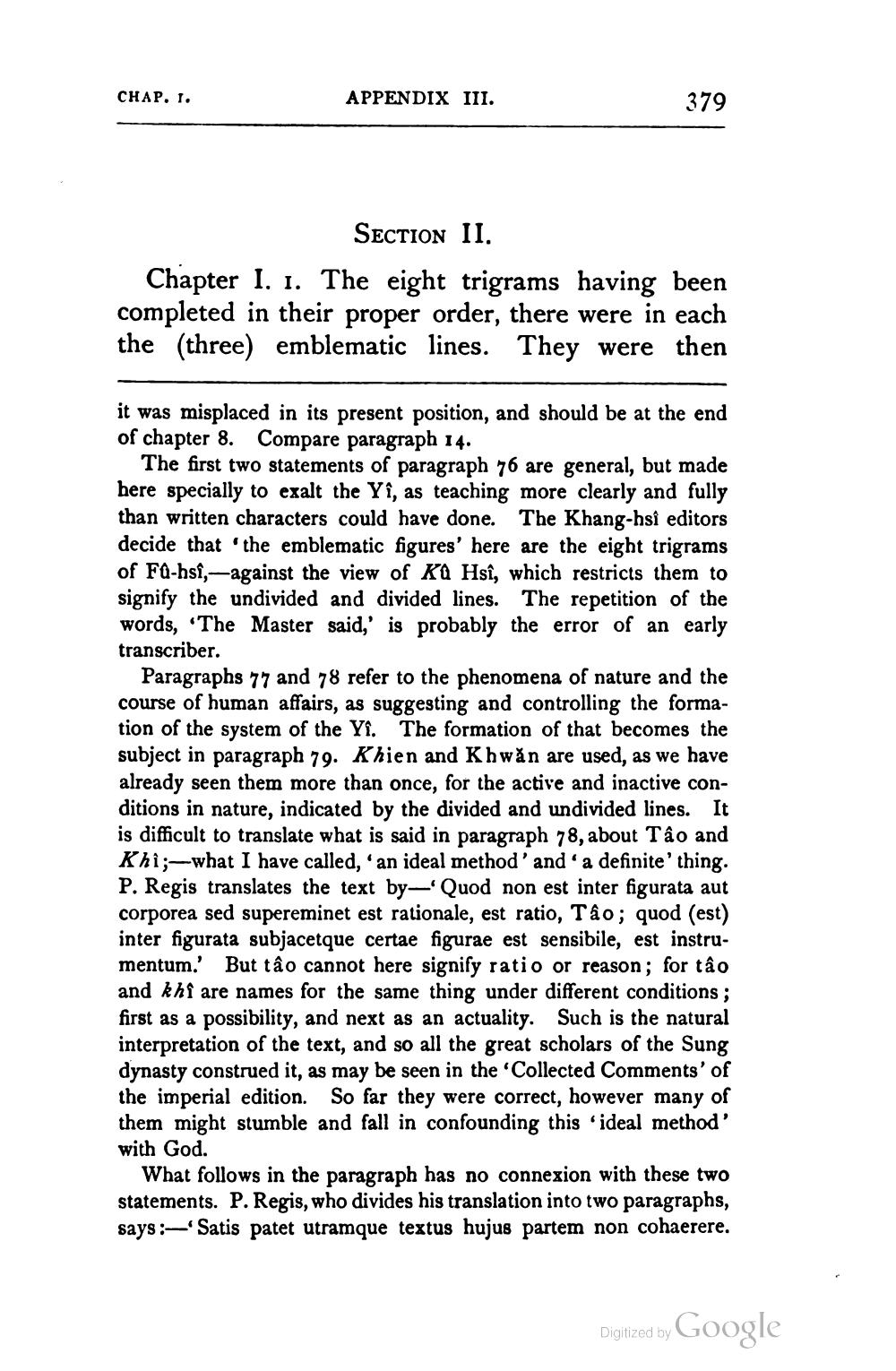________________
CHAP. I.
APPENDIX III.
379
Section II. Chapter 1. 1. The eight trigrams having been completed in their proper order, there were in each the (three) emblematic lines. They were then
it was misplaced in its present position, and should be at the end of chapter 8. Compare paragraph 14.
The first two statements of paragraph 76 are general, but made here specially to exalt the Yî, as teaching more clearly and fully than written characters could have done. The Khang-hsi editors decide that the emblematic figures' here are the eight trigrams of Fa-hsî,-against the view of KQ Hsî, which restricts them to signify the undivided and divided lines. The repetition of the words, The Master said,' is probably the error of an early transcriber.
Paragraphs 77 and 78 refer to the phenomena of nature and the course of human affairs, as suggesting and controlling the formation of the system of the Yi. The formation of that becomes the subject in paragraph 79. Khien and Khwăn are used, as we have already seen them more than once, for the active and inactive conditions in nature, indicated by the divided and undivided lines. It is difficult to translate what is said in paragraph 78, about Tâo and Khi;-what I have called, an ideal method' and a definite' thing. P. Regis translates the text by- Quod non est inter figurata aut corporea sed supereminet est rationale, est ratio, Tâo; quod (est) inter figurata subjacetque certae figurae est sensibile, est instrumentum.' But tâo cannot here signify ratio or reason; for tão and khi are names for the same thing under different conditions ; first as a possibility, and next as an actuality. Such is the natural interpretation of the text, and so all the great scholars of the Sung dynasty construed it, as may be seen in the Collected Comments' of the imperial edition. So far they were correct, however many of them might stumble and fall in confounding this ideal method' with God.
What follows in the paragraph has no connexion with these two statements. P. Regis, who divides his translation into two paragraphs, says :- Satis patet utramque textus hujus partem non cohaerere.
Digitized by Google




